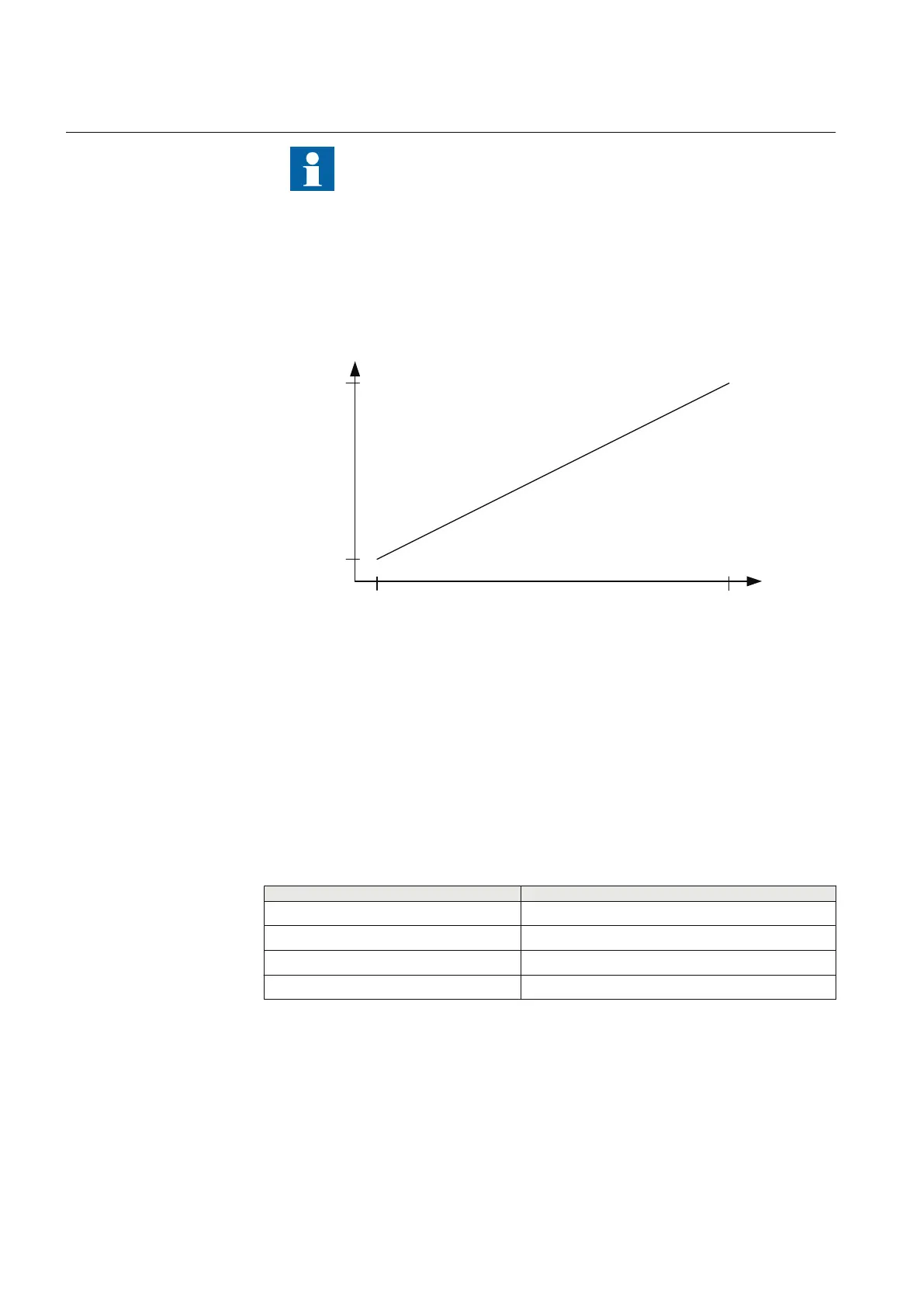The input scaling can be bypassed by selecting Value unit = "Ohm"
when Input mode = "Resistance" is used and by selecting Value unit
= "Ampere" when Input mode = "0...20 mA" is used.
Example for linear scaling
Milli-ampere input is used as tap changer position information. The sensor
information is from 4 mA to 20 mA that is equivalent to the tap changer position
from -36 to 36, respectively.
Input maximum
Input minimum
Input mode
”0..20mA”
4 mA
20 mA
Value minimum
-36
AI_VAL#
Value maximum
36
Value unit
”Dimensionless”
X130-Input#
GUID-85338A5E-3D2F-4031-A598-EA8A525190D3 V1 EN
Figure 24: Milli-ampere input scaled to tap changer position information
3.11.2.4 Measurement chain supervision
Each input contains functionality to monitor the input measurement chain. The
circuitry monitors the RTD channels continuously and reports a circuitry break of
any enabled input channel. If the measured input value is outside the limits, minimum/
maximum value is shown in the corresponding output. The quality of the
corresponding output is set accordingly to indicate misbehavior in the RTD/mA input.
Table 51: Function identification, limits for the RTD/mA inputs
Input
Limit value
RTD temperature, high > 200 °C
RTD temperature, low < -40 °C
mA current, high > 23 mA
Resistance, high > 2000 Ω
3.11.2.5 Selfsupervision
Each input sample is validated before it is fed into the filter algorithm. The samples
are validated by measuring an internally set reference current immediately after the
inputs are sampled. Each RTD sensor type has expected current based on the
Section 3 1YHT530004D05 D
Basic functions
88 615 series
Technical Manual

